Feed baby corn snake
How To Feed A Corn Snake In 5 Steps
Knowing how to feed your corn snake is vital to the reptile’s overall health.
In addition to feeding the snake the right type and size of prey, the feeding frequency is also important.
A baby corn snake needs to be fed once every 5-7 days, increasing to once every 7-10 days for a juvenile. When the snake is an adult over two years old, decrease feeding to once every 10-14 days. The size of the prey should never be larger than 1 ½ times the size of the corn snake’s midsection.
Not feeding your snake often enough will cause malnutrition, while overfeeding will lead to obesity and digestive issues.
If the size of the prey is too small for the corn snake, the animal will be hungry and possibly malnourished.
When the prey is too large, the snake will regurgitate its food, and the negative experience will cause a loss of appetite.
Read on to learn more about how to feed a corn snake, including diet and feeding guidelines.
Table of Contents
Corn Snake Diet
Corn snakes are strict carnivores, meaning they only eat meats and proteins.
The corn snake in the wild has a diet consisting of almost exclusively small rodents and birds.
In captivity, we want the same thing.
For corn snakes, this means small rodents like mice.
But you don’t have to go hunting for it yourself.
There are many pet stores and online suppliers available to take care of this for you.
With baby corn snakes, you want to look for pinkie mice.
Check out our article on how many pinkie mice to feed baby corn snakes for more info.
These aren’t a special breed of mouse at all, but pinkie mice are baby, hairless mice.
Their small size and lack of mobility make them perfect for the baby corn snake.
Corn snakes should only eat food smaller than its girth or width at mid-length.
For babies, this is tough, but pinkie mice will fit the bill nicely.
Live pinkie mice aren’t very mobile.
This makes them easier to hunt for the young snakes, and it avoids injury.
For all corn snakes, you never want to leave live prey in the tank because they may bite back as they’re hunted.
With pinkies, you won’t have this problem.
Mice are usually fed to a adult corn snake in live form or frozen and the fully thawed form.
While baby corn snakes can eat frozen and thawed pinkies, they’re less likely to.
The baby corn snake is very instinct-driven, and its instinct isn’t to eat food already dead.
It wants to eat something live.
So, the baby corn snake diet consists of pinkie mice (live preferably) fed once every 5 – 7 days.
Read more about how often to feed corn snakes.
Feeding A Corn Snake
This section tells you step-by-step how to feed a corn snake.
It also applies to feeding baby corn snakes.
Baby corn snakes are fed after their first prenatal shed.
Many will eat right away, but sometimes they wait for a little while.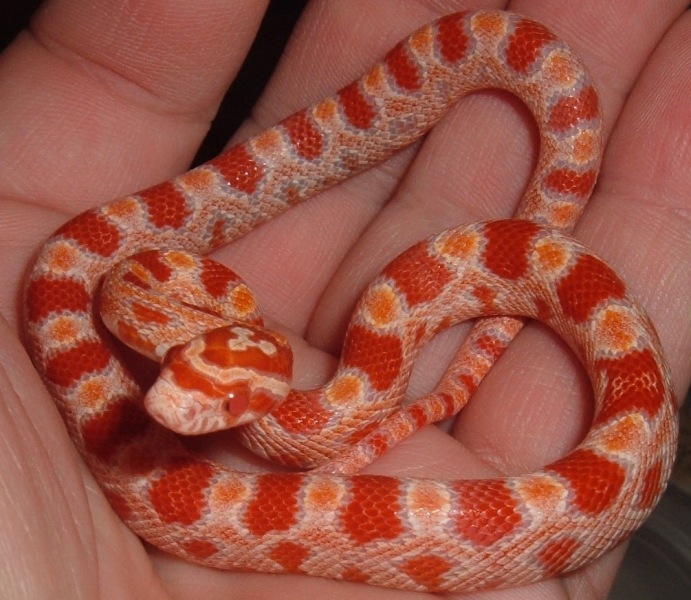
Follow these steps to feed a corn snake.
#1 Choose The Right Prey
As we mentioned in the section above, the best choice for corn snakes is mice.
Make sure they’re smaller than the corn snake’s width at mid-length.
For baby corn snakes, use pinkie mice.
If you’re worried about even a newborn pinky mouse size, use a baby spiny mouse or a baby pygmy mouse.
Live is better than frozen and thawed, but make do with this if it’s all you have.
For maximum safety, look at our guide on picking the right size mice for a corn snake.
#2 Place The Mouse In Front Of The Corn Snake
Take the mouse and put it right in front of the corn snake.
Watch to see if the corn snake notices the mouse.
If you see the snake notice and watch the mouse, keep your hands back.
Corn snakes have a hard time telling the difference between prey and fingers.
Most adult corn snakes will strike the mouse right away and begin to swallow it.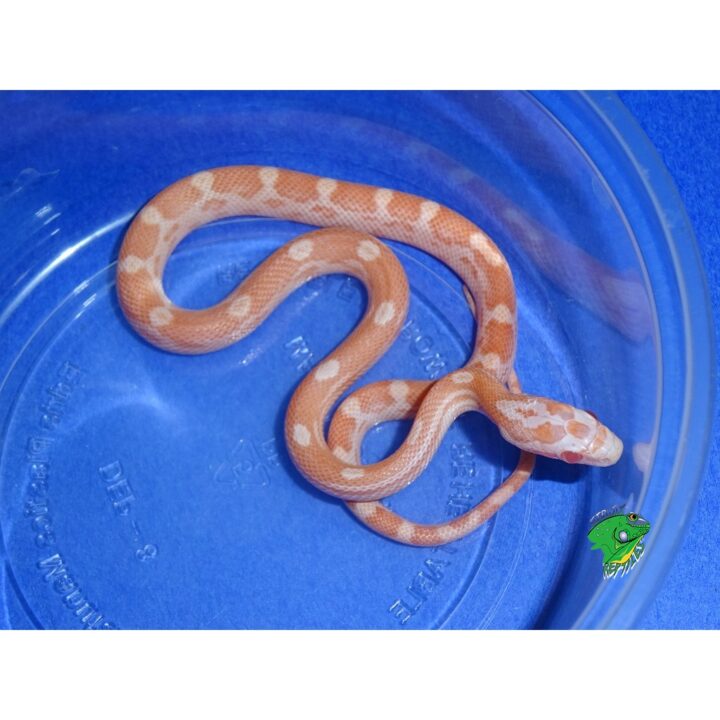
For those whose snakes do this easily, skip to step #5.
Note:
You don’t ordinarily need to feed the corn snake by hand as you do with other reptiles.
These keen carnivores prefer to hunt themselves whenever they can.
If your corn snake seems uninterested, you need to move to step #3.
#3 “Brain” The Corn Snake
When your corn snake isn’t interested in your mouse, what’s happening is the snake’s natural hunting instincts haven’t been triggered yet.
So we need to help those instincts along.
While it may seem gross, one almost-foolproof way to get a snake’s attention is to brain the mouse.
In other words, use a knife to cut into the skull of the mouse and squeeze.
This is done so some brain matter comes out of the cut or nose.
Another way is to cut the mouse in half, so the corn snake won’t have to eat the whole thing in one bite.
The smell and sight of the insides work wonders for triggering the hunting and eating instincts.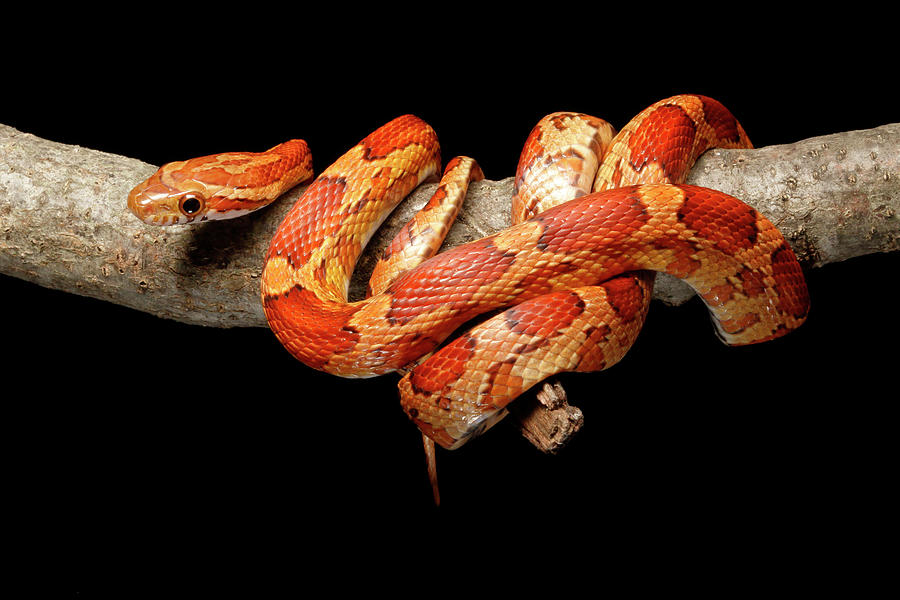
#4 Tease The Corn Snake
If braining is too gross or it’s still not pleasing, perhaps tease the corn snake.
When you tease the snake, you take half of the mouse and tap it to the nose of the corn snake.
You may want to do this while holding the snake, so you have more control over its movement.
Once the snake strikes put it down in the tank and let it enjoy its meal.
#5 Remove The Prey Remains
Once your snake has ingested its meal, go in a clean up any remains.
There aren’t usually too many with snakes, but it’s still a good idea to check.
#6 Repeat Every 5 – 7 Days
Now you repeat the process every 5 – 7 days.
Adjust the size of the mouse to match the width of the corn snake.
When it can eat adult mice, you may want to switch to feeding every 7 – 10 days.
Warning!
Don’t ever feed a corn snake within 24 hours of feeding.
It won’t have had time to digest its last meal.
Helpful Tips for Feeding a Corn Snake
While corn snakes are typically voracious eaters, there may be times when your snake does not have much of an appetite or refuses its food.
Corn snakes will experience appetite loss during shedding, sickness, pregnancy, and brumation.
If your snake is not eating as it usually does, seek veterinary care to rule out illness.
Below, we provide some helpful tips on how to make feeding time an enjoyable experience for both you and your snake.
Maintain Proper Temperatures
Corn snakes need heat for properly digesting their food.
Because they are ectothermic animals, snakes rely on outside sources of heat to maintain their body temperature.
Provide your corn snake with the optimal temperature gradient in its enclosure, so the animal has ways to warm up and cool down.
The cool side of the tank should have a temperature range of 75-82° degrees Fahrenheit (27° C).
The ambient temperature in the middle of the tank needs to be between 80-85° degrees Fahrenheit (29° C).
The best temperature range for the warm basking side of the tank is 88-92° degrees Fahrenheit (33° C).
Regularly monitor the enclosure temperatures to ensure they are correct and adjust when necessary.
Monitor When Feeding
It is always best to monitor your corn snake during feeding time, especially if you are using live prey.
Live prey may bite or scratch your snake enough to cause serious injury, and the risk increases when the prey is not eaten right away.
Even if you are using thawed prey, monitor your corn snake for any signs of difficulty eating or regurgitation.
If your snake is struggling to eat, this is usually a sign the prey is too large.
It is very unlikely for a snake to choke because it has a glottis, which allows the animal to breathe while eating.
However, if the adult corn snake regurgitates its food, it will associate this negative experience with mealtime, and its appetite will be diminished.
No Wild-Caught Prey
Always purchase feeder prey from a pet supply store or another reputable seller.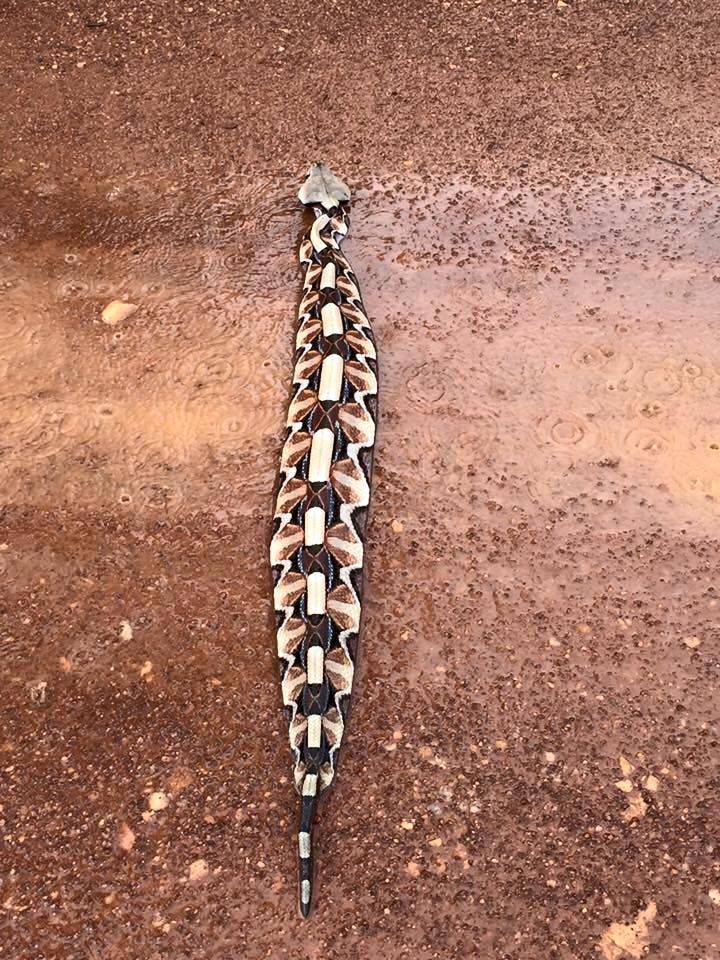
Never feed your corn snake any wild-caught mice, rats, or other small prey.
Wild prey animals are highly likely to be infested with parasites or other diseases which are very harmful to your snake.
Use Feeding Tongs
Your corn snake may get very excited and strike as soon as it sees prey.
If you are using your hands to feed your pet snake, there is a chance you will be bitten.
To avoid the risk of being bitten by your corn snake during mealtime, use feeding tongs instead of your hands.
Feeding tongs have rubber tips for your snake’s safety, and they are available at most pet supply stores.
Weigh Your Snake
Use a small kitchen scale to weigh your corn snake once a week.
Tracking your snake’s weight allows you to determine if your pet’s growth rate is on track and the animal is maintaining a healthy weight.
If your snake is losing weight or gaining too much, you will need to schedule a visit with your veterinarian to rule out any underlying illness and create a diet plan.
Feed Your Snake in the Morning or Evening
Corn snakes are crepuscular, which means they are the most active during the hours of dawn and dusk.
The best time to feed your snake is during the evening, close to sunset.
The snake will be rested and ready to hunt during this time, so it will be more receptive to being fed.
If you are unable to feed your corn snake in the evening, aim to have morning meal times instead.
Provide a Water Bowl
Place a large, shallow dish in your corn snake’s enclosure and make sure it is filled with fresh, clean, chlorine-free water at all times.
Snakes tend to soak in their water dish, so you may need to change the water more than once per day if it gets dirty.
Conclusion
We hope you enjoyed learning how to feed a corn snake.
It can be tricky, but if you choose the right size of mouse and take care not to feed it too often, it’ll all be just fine.
Look for mice smaller than their width at mid-length.
Babies can eat every 5 – 7 days, while adults should wait every 7 – 10 days.
Follow these guidelines, and your cute reptile will be just fine.
Commonly Asked Questions
How do I know if my corn snake is hungry?
When your corn snake is hungry, it will be more active during the day and will spend more time near the front of the enclosure.
The snake will also flick its tongue in and out more frequently than usual.
Can I hold my corn snake after feeding?
It is not advisable to handle your corn snake for up to 48 hours after a meal.
Handling your snake too soon after eating will cause the animal to regurgitate its food.
It is also essential to handle your corn snake at least 1-2 times per week to keep the animal tame and provide it with some exercise.
However, handling your snake more frequently than once per day may cause the reptile to become stressed and lose its appetite.
Related: How to tame a corn snake
How long can a corn snake go without eating before dying?
During brumation, a corn snake is able to survive for 2-3 months without a proper meal.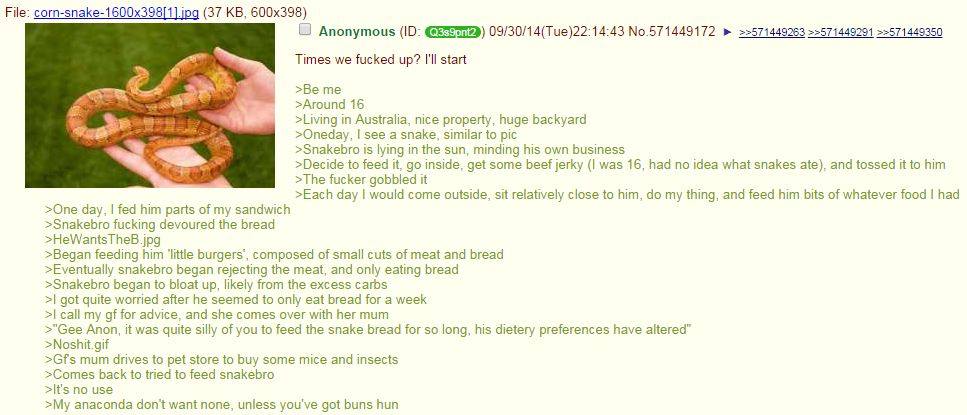
Outside of brumation, a corn snake is only able to go for two weeks without eating.
If you have issues with getting your corn snake to eat, it is best to seek a reptile veterinarian for proper diagnosis and treatment.
When To Start Feeding Baby Corn Snakes
Knowing when to start feeding a baby corn snake is key in ensuring that it gets a good start in life. Baby corns are usually good eaters and will consume frozen-thawed pinkies. This is not always the case, though.
Baby corn snakes can be fed a pinkie shortly after hatching. It is not uncommon for baby corns to refuse food until they have shed for the first time. This usually happens between 1-2 weeks after hatching. Continuously refusing food is a cause for concern. You can try scenting the pinkie, tub feeding, adjusting the enclosure, and feeding live prey to encourage the corn snake to eat. Force-feeding is an emergency resort tactic. Few reptile vets will recommend force-feeding unless the snake has lost over 10% in mass or has other health issues.
Overfeeding your baby Corn snake may not seem like a bad thing as growing snakes need vitamins and nutrients. However, overfeeding or power feeding can result in an unhealthy snake with a shorter lifespan.
Hatchlings will usually be between 8-12 inches long and can start eating shortly after hatching. In all likelihood, though, a hatchling won’t eat this soon. It’s quite common for a snake hatchling to ignore food until its first shed. This usually happens within 1-2 weeks of hatching.
Still, you can offer food to a baby corn snake shortly after it has hatched. Don’t be concerned if it rejects the food, however. It won’t hurt the baby snake to wait a short while after hatching for its first meal.
If a baby corn snake continues to reject food after its first shed it is a good idea to start recording its weight and growth daily. Breeders will usually track this information post-hatch and keep feeding records. If you bought the snake from a dealer, you’ll be able to request this info from them.
What Do Baby Corn Snakes Eat?
Corn snakes eat mice in the wild and in captivity. In the wild, they also eat birds, frogs, lizards, and other rodents. Baby corn snakes should be fed pinkie mice.
The size of the snake will determine the size of the feeder mouse. Choosing the right sized feeder mouse is important. Too small, and the snake won’t get enough nutrients to grow properly. Too large, and the snake may have trouble eating. It could also suffer internal damage.
The table below details guidelines for feeding snakes by age. This is not set in stone. In fact, it is better to choose a feeder mouse based on the size of your snake rather than its age. Choosing a mouse that is the same thickness, but not thicker, as your snake’s mid-body section is the ideal size.
| Snake’s Age | Feeder Mouse Size | Feeding Frequency |
|---|---|---|
| Hatchling: | Pinkie | Every 5-7 days |
| Juvenile: | Fuzzy | Every 7-10 days |
| Yearling: | Small or Hopper | Every 7-10 days |
| Adult: | Adult or jumbo | Every 10-14 days |
Remember, the larger the feeder animal, the longer to go in between feeds. If your corn snake is particularly large and jumbo mice aren’t cutting it, try small rats. Rats offer more nutritional value. A rat also takes longer for a snake to digest. Be sure to adjust the feeding schedule accordingly.
If your corn snake is particularly large and jumbo mice aren’t cutting it, try small rats. Rats offer more nutritional value. A rat also takes longer for a snake to digest. Be sure to adjust the feeding schedule accordingly.
How To Feed a Baby Corn Snake
Corn snakes are usually good eaters right from the get-go. Using a pair of feeding tongs or tweezers, hold a thawed pinkie by the middle and wiggle it before the snake. A bit of encouragement might be in order. Do this by touching the snake’s mouth with the head of the pinkie. In most cases, this will be enough to earn a feeding response.
Once the corn snake has latched on, release the pinkie. Avoid startling the snake while it eats as it may stop eating.
Should I Use Vitamin Or Calcium Powder?
Studies, such as this one in Copeia, have shown that a snake’s growth is directly related to how much food it ingests. This includes the quality of the nutrients, fats, and minerals in the food.
Sprinkling your snake’s food with vitamin and/or calcium powder is something that you can do for a growing snake. It’s not necessary, but it can be beneficial to their growth, especially hatchlings.
Coating food with these supplements also has the benefit of ensuring that a snake is receiving all the nutrition it needs. This can be good for growing snakes, or snakes that have gone off food and need a nutrient boost.
My Baby Corn snake Won’t Eat
Sometimes, a baby corn snake will reject food even after its first shed. There are a few methods you can try to trick the snake into eating before resorting to force-feeding.
Scenting Food
Scenting the pinkie can be a way to trick a baby corn snake into eating. Corn snakes in the wild will also consume lizards, frogs, and small birds. Occasionally, captive-bred ones will have the same preference.
To scent a pinkie, wash and dry the mouse. Rub it on a frozen-thawed chick so that the scent is transferred. Now offer the scented pinkie to the snake. You can also do this with frogs or lizards.
Now offer the scented pinkie to the snake. You can also do this with frogs or lizards.
Training the snake to accept unscented feeder mice is ideal, because, aside from chicks, other feeder prey animals are difficult for many to come by.
Container Feeding
Container feeding can be another useful tactic for convincing picky baby corn snakes to eat. Here’s how:
- Find a round container that has a lid.
- Place the feeder mouse by the inner wall and seal the snake inside the container. Leave it alone for 10-15 minutes.
- Return the snake to its enclosure when done, even if it didn’t eat.
The snake will continuously bump into the feeder mouse as it follows the curve of the container. This can trick the snake into eating. The container’s walls should not be clear. Although placing a towel over the container can work, the lid should be pierced in several places to allow airflow.
Pros for tub feeding:
- There’s no bedding, so there is less mess and no chance for the snake to ingest substrate
- Tub feeding is good for encouraging picky eaters to consume food
Cons for tub feeding:
- Removing a snake from its environment can stress it out and discourage it from eating its meal
- Picking up a snake to put it back into its enclosure can cause it to regurgitate its meal because that’s how snakes escape threats
Location
A baby corn snake may reject food if it feels anxious. Consider:
Consider:
- Is the enclosure too large? Snakes can feel exposed and unsafe in too large enclosures.
- Are the temperature and humidity levels correct? Corn snakes need a temperature gradient of 75-85°F and humidity levels between 40-50%.
- Are there any external factors, such as loud music or scents, making the snake uncomfortable? Place the enclosure in a calm space that doesn’t see an abundance of activity, such as a study or den.
Adjusting the enclosure can be the right move. Once the snake is feeling more secure, it may eat its food.
Live Feeding
Frozen-thawed pinkies are ideal feeders. However, if your baby corn snake refuses frozen-thawed then a live pinkie is an alternative. Place the pinkie near the snake and give it some privacy. Don’t leave the pinkie in there for more than 10 minutes. If the snake doesn’t eat the pinkie, remove it.
Breeders that raise a corn snake to eat only live prey should notify a possible owner about its eating habits. Getting a corn snake raised on live food to take frozen-thawed can be difficult.
Getting a corn snake raised on live food to take frozen-thawed can be difficult.
Force-Feeding
Only consider force-feeding if the snake has lost over 10% of its weight and a vet agrees that force-feeding is the way forward. Force-feeding a corn snake, at any age, should not be done without first being shown the process by a reptile vet. It should also only be done in emergency situations.
Is Overfeeding My Snake Bad?
Overfeeding a snake can cause it to become overweight. It can also cause a young snake to grow faster than it should. This can shorten its lifespan and cause other health issues.
Is My Snake Overweight?
The signs of an overweight snake are:
- Raised fat reserves
- Being overly soft to the touch. Snakes are lean and muscular when at their ideal weight and should be firm to the touch
- Pronounced fat rolls when coiled
- Scale spread
- Obvious hips above the tail
How Long Can You Keep Frozen Mice?
Feeder rodents can usually be kept frozen for up to 6 months.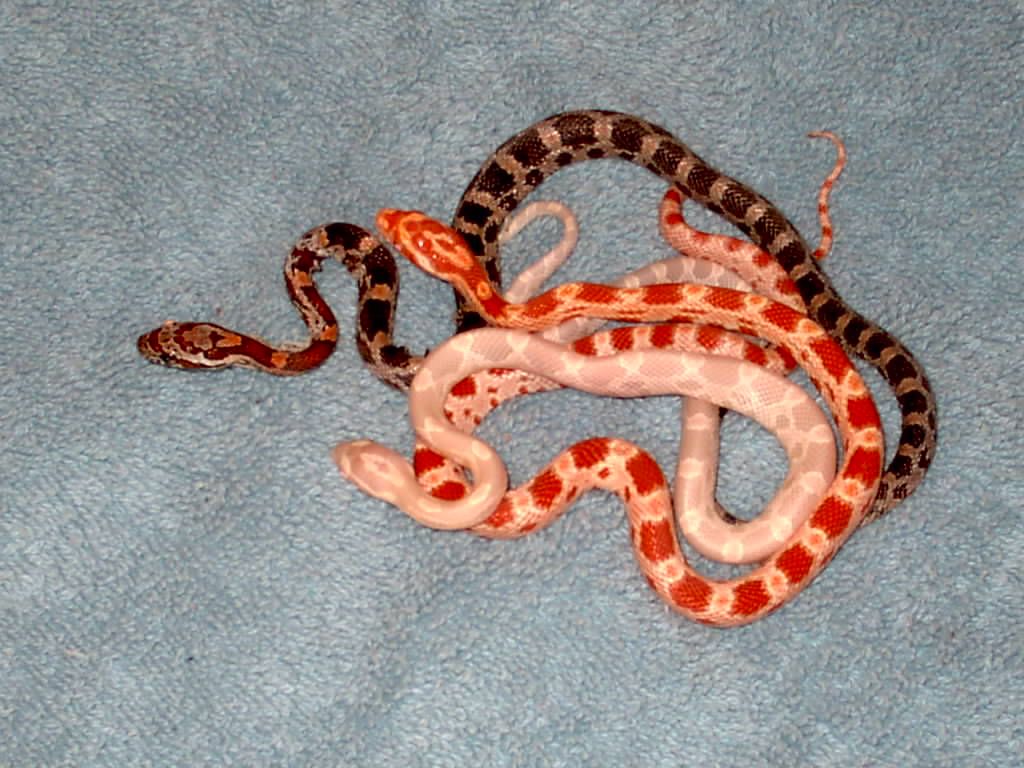 Ideally, they should be put deep in the freezer to avoid partial thawing.
Ideally, they should be put deep in the freezer to avoid partial thawing.
If you notice a small amount of freezer burn on a feeder mouse it can still safely be fed to the snake.
Thawing Frozen Mice
Thaw the pinkie in warm water for 10-15 minutes. Do not use boiling water, as this can change the smell and texture of the pinkie. You’ll know the mouse is thawed when you can poke its middle and feel no lumps inside. Do not thaw a mouse in the microwave or offer a partially-thawed mouse.
Baby corn snakes can be fed shortly after hatching. In all likelihood, they won’t eat until after their first shed. Don’t be alarmed if your baby corn snake refuses to eat for the first 1-2 weeks of its life.
Post-shed, if your snake still refuses to eat it might be time to try different feeding methods, such as container feeding or scenting. Force-feeding is a last resort and should only be done in emergency situations.
MLA Style: Carter, Lou. "When To Start Feeding Baby Corn Snakes" Snakes For Pets, (August 11, 2022), https://www. snakesforpets.com/when-to-start-feeding-baby-corn-snakes/.
snakesforpets.com/when-to-start-feeding-baby-corn-snakes/.
APA Style: Carter, L. (August 11, 2022). When To Start Feeding Baby Corn Snakes. Snakes For Pets. Retrieved August 11, 2022, from https://www.snakesforpets.com/when-to-start-feeding-baby-corn-snakes/
What do corn snakes eat? Great food for your snake
Corn snakes feed on amphibians such as frogs, small snakes, rodents and bird eggs in their natural habitat.
Corn snakes are North American amphibious rat snakes, also known as red snakes. They are not poisonous, but they bite.
Corn snakes are very active from March to November. They vary greatly in color and the patterns they display vary from age to age. Most often, the corn snake is kept as a pet in Brazil. These are hardy pets that are easy to care for. Adults usually prey on any healthy animal that they can easily overpower. In late April or early May, they wake up from hibernation and immediately start hunting. They shed old skin and grow new skin as they get longer.
Are you also curious about what corn snakes eat? When is the best time to feed them? Why are they aggressive after eating? Read on to get an idea of the diet of variable color pattern snake species, read Are garden snakes venomous and are snakes cold-blooded?
When is the best time to feed the corn snake?
Can we feed the corn snake at any time? Can we feed them when we eat? Is there a schedule to be followed?
They are quite active at night and very quiet during the day. They only hunt at night, so many people feed their pet snakes in the evening or in the dark. Diets may vary by size and age. Now the question arises, what to feed them? What are they eating? As a rule, corn snakes feed on small rats and other rodents. Wild snakes eat mice and you will see some of them eating lizards and frogs. Whether it is a wild snake or a captive one, snakes should only be fed at night.
The schedule is not strict, but if you feed them regularly from time to time, they can get used to it.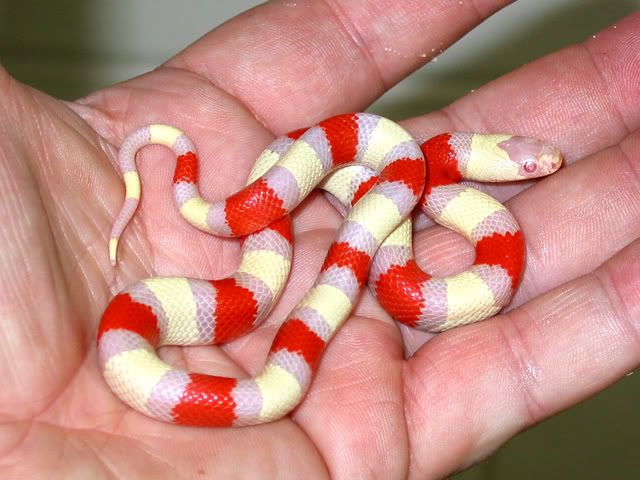 One thing you have to take care of is that sometimes they defecate into water, so the waste should be cleaned up immediately for their health. Also, you need to know that you don't have to feed your corn snake every day. Studies have shown that a snake can be fed once every seven days. This is the most erroneous among the owners. Daily food will make them obese and overweight. A baby or newborn needs to be fed every 3-5 days.
One thing you have to take care of is that sometimes they defecate into water, so the waste should be cleaned up immediately for their health. Also, you need to know that you don't have to feed your corn snake every day. Studies have shown that a snake can be fed once every seven days. This is the most erroneous among the owners. Daily food will make them obese and overweight. A baby or newborn needs to be fed every 3-5 days.
Overweight corn snakes
Generally, corn snakes feed on small rodents and amphibians, but what happens if they overeat?
The corn snake is generally small and round, with a light weight and a small stomach. The overall size is about 60 inches (152 cm) long and weighs about 1.98 pounds (0.9 kg). They don't usually eat much, but when they hunt something big it can make them fat and thus increase their diet and stamina to eat more. You will see that in some snakes the scales on the belly overlap.
This is what full corn snakes look like. You will find that some snakes have a fat belly. They are also overweight and can sometimes look odd. If your snake weighs more than one kg (2.2 pounds), you should consider it a flag and work on its health. Also don't feed them every day, try to feed them every 5-7 days. It will only make them obese and affect them badly. You can keep a record of your diet plan. To maintain their weight, you can reduce the amount or frequency of their diets.
You will find that some snakes have a fat belly. They are also overweight and can sometimes look odd. If your snake weighs more than one kg (2.2 pounds), you should consider it a flag and work on its health. Also don't feed them every day, try to feed them every 5-7 days. It will only make them obese and affect them badly. You can keep a record of your diet plan. To maintain their weight, you can reduce the amount or frequency of their diets.
What do corn snakes eat in the wild and in captivity?
Feeding corn snakes in captivity is an important issue. What should we really be feeding them? Do captive and wild corn snakes eat the same way? Should he be dead or alive? What can you feed corn snakes besides mice?
Zoo snakes and wild snakes eat the same thing. It's not about the quantity, it's about the items or choices they're tied to. If possible, feed them mice, rats, lizards, or whatever rodents you can find, as they enjoy feeding these animals at room temperature.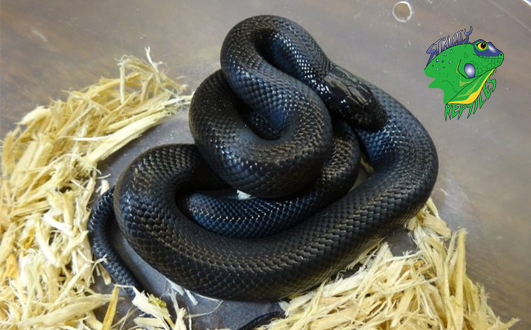 However, you can train snakes to feed on something other than rodents. So should you feed them dead or alive? Corn snakes usually like to be fed live prey, but it is also possible to treat the snake with dead mice or other frozen prey animals. You don't have to kill mice or other animals for food. You can easily buy frozen foods from corn snake diet stores. You can thaw frozen snake mice by placing them in a Ziploc bag and placing it in water.
However, you can train snakes to feed on something other than rodents. So should you feed them dead or alive? Corn snakes usually like to be fed live prey, but it is also possible to treat the snake with dead mice or other frozen prey animals. You don't have to kill mice or other animals for food. You can easily buy frozen foods from corn snake diet stores. You can thaw frozen snake mice by placing them in a Ziploc bag and placing it in water.
Are cockroaches, vegetables, eggs, fish, beef or pork good for corn snakes?
What else should I use to feed corn snakes? Can we feed a baby corn snake cockroaches, vegetables, eggs, beef or pork? Can I share my meat with an adult corn snake?
Many people who have a corn snake do not understand whether to feed their snakes the same food as these pets. Adult corn snakes enjoy eating their rodents. You can teach them to eat dead bodies or other possible things. But does that mean you can train a baby corn snake to eat eggs, fish, vegetables, or beef? You will find some corn snakes, especially when they are kept in captivity and eat fish and rotten eggs, but these pet snakes do not like this as it is not their natural diet. Beef, pork, and vegetables should not be fed to baby corn snakes. Also, don't feed them cockroaches. Make sure you only feed them once every seven days.
Beef, pork, and vegetables should not be fed to baby corn snakes. Also, don't feed them cockroaches. Make sure you only feed them once every seven days.
What kind of treats should I give my corn snake?
Do you have an idea when to treat corn snake? What else can you give them besides their regular food? Since fish, vegetables, meat and eggs are excluded, what treats should be given to the corn snake? Do you think so too? Is it worth it to treat them to something at any time?
Like humans, corn snakes also have some pets to feed when they do something good. Place mice in a box from time to time, as corn snakes love to eat mice. Other than that, you can feed them rodents like lizards, rats. Vegetables, meat, beef and cockroaches should not be given as treats because these pets don't like it. When you train or teach them something and they learn it, you can reward them with a treat. Don't increase the amount or frequency of treats as this can negatively impact them.
Why is my corn snake so aggressive after feeding?
Did your snake attack after eating? Can these reptiles bite when they are aggressive? Do they attack if they don't like what's in their stomach? Should we leave them alone after feeding?
Snakes do not attack for no reason; it is either because they are afraid or for their own safety.
But this does not mean that these reptiles do not become aggressive. An angry snake is the worst thing you want to deal with. Do these reptiles bite when they're angry? You certainly can't predict anger, and yes, they can bite, but don't worry, we'll have your back.
When a snake is hungry and wants to treat itself to food, its body releases certain hormones that excite it and thus make it attack. Also, when you feed a snake outside of its natural habitat, it can affect its aggressive behavior. Corn snake bites are not to be feared. This type of breed is considered harmless and not as dangerous as other breeds. They are non-venomous and non-venomous. Be sure to clean and disinfect the area after the bite.
They are non-venomous and non-venomous. Be sure to clean and disinfect the area after the bite.
So why leave them alone? Well, you will not always find them in their aggressive region. You shouldn't leave them alone, but at least let them enjoy their food and room. If you are struggling, visit a veterinarian for an opinion on your snake's health. The veterinarian will run several tests before recommending any proper treatment.
Can you handle the snake after it has eaten?
Should a snake be fed outside its natural habitat? Is it bad for a snake to eat a lot, as it becomes aggressive after the eating process is over? Can we deal with a snake if it has eaten too much?
Handling a snake after it has eaten is a difficult task, as its purpose is to quickly digest the prey. Can a well-fed snake be more harmful than a hungry one? Treating the snake outside of its natural habitat will no doubt cause it to become more aggressive, and they will also become agitated when they see their food, making it more difficult to deal with its excitement.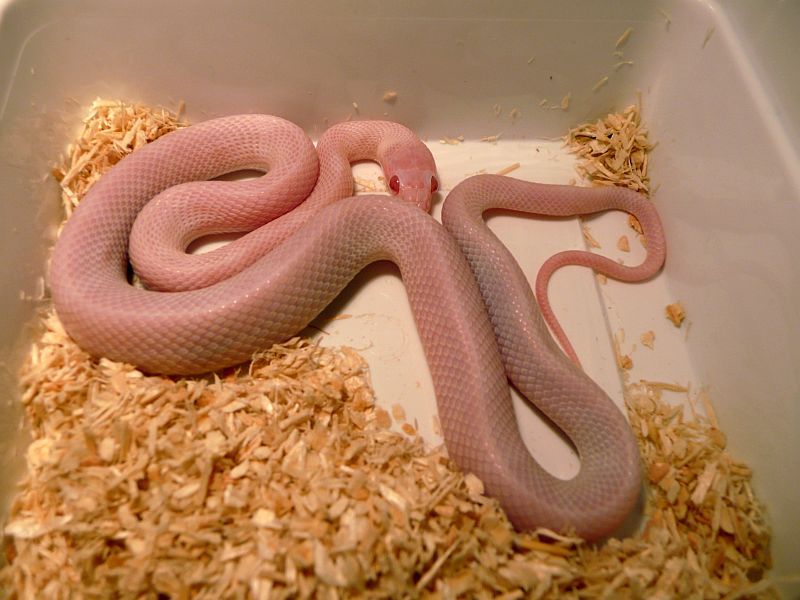 Restraining excitement is very difficult even for a person. But these disturbances can vary from species to species and size to size. An overweight corn snake at this time can be a treat. If you train them well, they won't necessarily react in the same way.
Restraining excitement is very difficult even for a person. But these disturbances can vary from species to species and size to size. An overweight corn snake at this time can be a treat. If you train them well, they won't necessarily react in the same way.
Why won't my corn snake eat? Is that also what you are looking for? There are people who think that their snake is sick or something is wrong with their health. Well, if she sheds or sheds, it's part of the snake's life cycle when she sheds her skin. During this time, the snake may lose its appetite. It may be for a week or more, but you have to live with it. Snakes molt 2-6 times a year depending on their age and size.
Here at Kidadl we have carefully prepared a lot of interesting family facts for everyone! If you liked our suggestions on what corn snakes eat, then why not take a look at deaf snakes or corn snake facts.
feeding tips and interesting food facts for you
Corn snakes are North American rat snakes that use constriction to subdue their small prey.
The corn snake is a reptile that lacks functional venom and is therefore harmless. Corn snakes are similar in appearance to venomous copper snakes and are often killed due to misidentification.
Corn snakes benefit people by helping to control wild rodent pests that destroy crops and spread disease. The corn snake gets its name from the fact that it often appears around the grain. Coral snakes and king snakes love to eat young corn snakes. The corn snake is primarily nocturnal, hiding under loose tree bark, animal burrows, or in old abandoned structures during the day. From March to November, the corn snake is most active. Corn snakes are also called red rat snakes and are a popular snake breed that people keep as pets.
They have spots on the dorsal side, usually orange or brown. They also have black and white belly markings. Corn snakes rarely attack and can withstand human contact for long periods of time. The corn snake will make a good pet if you are a snake lover who enjoys interacting with your snake. A twenty gallon glass aquarium with enough space for additional habitat components such as hiding boxes, water bowl, and substrate would be a good sized terrarium. Corn snakes are small, so make sure the tank is secure so they don't run away.
A twenty gallon glass aquarium with enough space for additional habitat components such as hiding boxes, water bowl, and substrate would be a good sized terrarium. Corn snakes are small, so make sure the tank is secure so they don't run away.
Snakes come in a wide variety of morphs (shades and patterns) making them good pets. The corn snake is a great snake to keep as a pet. This is a fantastic choice for new snake owners because they are generally docile, easy to care for, and don't grow very large. Corn snakes are among the most affordable pet snakes available from reputable breeders and pet stores. Corn snakes are considered the friendliest snakes and they are undoubtedly the most popular pets due to their wide availability and ease of keeping. Corn snakes have an approximate lifespan of six to eight years, but they can live longer.
Corn snakes are 2 to 5.97 feet (0.6 to 1.81 m) long when fully grown. Corn snakes reach their full size at two to three years of age. They start at 8-12 inches (20. 3-30.4 cm) long and grow to 4-5 feet (1.2-1.5 m) long when they reach maturity. Approximately fifteen eggs are laid in a typical brood of snake corn. A small little finger can be eaten by a baby corn snake. After hatching from the eggs, the snakes will be hungry and should be fed as soon as possible. A clutch of fifteen eggs can eat up to thirty mice in one week.
3-30.4 cm) long and grow to 4-5 feet (1.2-1.5 m) long when they reach maturity. Approximately fifteen eggs are laid in a typical brood of snake corn. A small little finger can be eaten by a baby corn snake. After hatching from the eggs, the snakes will be hungry and should be fed as soon as possible. A clutch of fifteen eggs can eat up to thirty mice in one week.
Separate each baby corn snake into its own tiny container. Reptiles are very sensitive to changes in barometric pressure and you will notice that some of them behave differently. Are they exotic? Well, corn snakes are an incredibly common exotic snake breed that have proven themselves to be great pets. Corn snakes are adorable animals due to their vibrant color variations and wary demeanor. Corn snakes cover most of the daylight hours.
Corn snakes are quite hardy when it comes to cool night temperatures. When kept as a pet, these reptiles require warm and cool temperatures throughout the day. There is a lot of advice on how to build a cage or habitat for corn snakes, as well as how to build an aviary for corn snakes.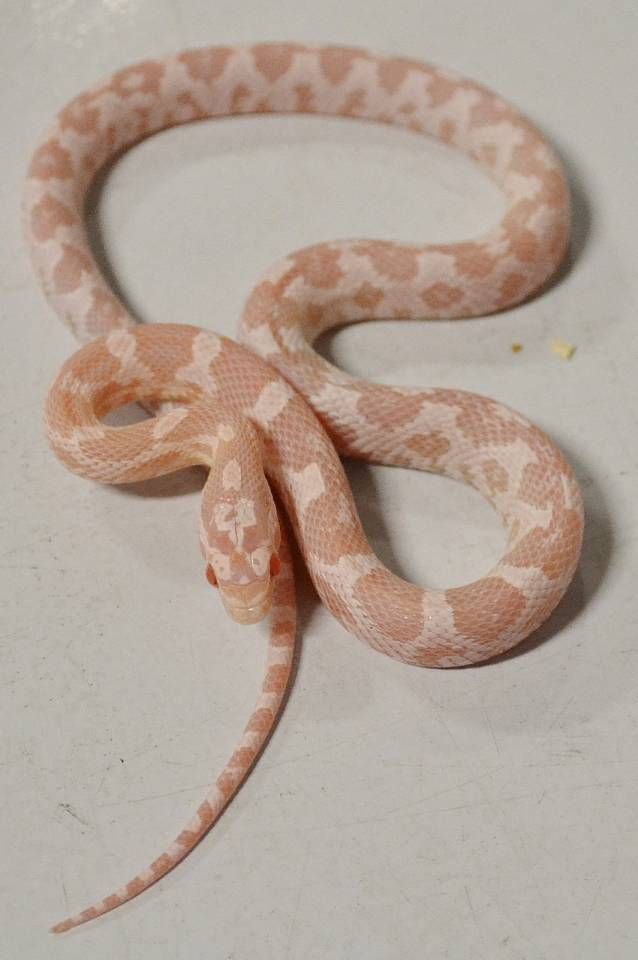 A cage is nothing more than an aviary in which your pet snake will live. This is a glass or plastic box. It is not a suitable habitat or home until it has heating, lighting, a bowl of water, and a substrate. The substrate is the substance that goes to the bottom of the cell.
A cage is nothing more than an aviary in which your pet snake will live. This is a glass or plastic box. It is not a suitable habitat or home until it has heating, lighting, a bowl of water, and a substrate. The substrate is the substance that goes to the bottom of the cell.
Newspaper, aspen shavings, fresh bedding and cypress mulch are all excellent substrates for corn snakes. Some heat is required to set up the corn snake cage. There are many ways to heat the cage. Corn snakes in the wild have a natural day/night cycle. In captivity, they should have the same. For lighting, you can use an adjacent window or a fluorescent lamp on the cage. Here's what you should put inside the corn snake's cage: shelters, bowls of water and climbing branches, among other items. Reptiles, like other species, grow to their full size, whether you have a large or small enclosure for them.
If you enjoyed this informative article, you might be interested in learning more about the Garter Snake Diet and the Pig Diet here on Kidadl.
What do corn snakes eat?
Corn snakes are constrictors, that is, they feed by grasping prey with their teeth. After that, the animal is wrapped.
The best menu for adult corn snakes is large mice and other small mammals, but they also eat birds and their eggs. They eat lizards, other small snakes and frogs. Rodents are also prey for the baby corn snake. Rodents include mice and rats. These meat eaters don't eat too often. Corn snakes are picky eaters and will gladly eat almost anything that is not larger than themselves. Their main food source is rodents, especially mice and rats. They also occasionally feed on moles, birds, bats, amphibians, and reptiles.
Tree frogs are especially popular with the young of this species. They get all the nutrients, vitamins and minerals they need from mice and rats. Due to the risk of harm and parasites, never feed your snake live prey. Changes in weather and temperature can affect a reptile's appetite, regardless of your settings. Fish generally don't make up a large part of a corn snake's diet, but if you respect the size limits, you can feed them fish without risking their health. They consume a wide range of fish species, from tiny minnows to colossal groupers. Are there vegetarian snakes? Unfortunately, there is no such thing as a vegetarian snake.
Fish generally don't make up a large part of a corn snake's diet, but if you respect the size limits, you can feed them fish without risking their health. They consume a wide range of fish species, from tiny minnows to colossal groupers. Are there vegetarian snakes? Unfortunately, there is no such thing as a vegetarian snake.
Corn Snake Feeding Chart by Weight
Corn snakes are predators that eat a wide variety of creatures in the wild, including rats, mice, birds, and even bats. Snake food should be selected according to the age and size of your snake. Ideal prey is about the same width as your snake, or one and a half times as wide as it is.
A pinkie or newborn mouse can be handled by a hatched corn snake, although adult corn snakes can handle adult mice. Corn snakes, for the most part, eat frozen prey without difficulty. For food size, you can use the approximate corn snake feeding rate below, which is similar to the corn snake feeding chart.
Corn snake weighing less than 14.1 g should be given a little finger every four days. However, for a 0.56 to 0.84 oz (15.8–23.8 g) corn snake, two little fingers can be fed five days apart. Feed intake for corn snakes weighing 0.88 to 1.05 oz (25-29.7 g) should be light and fluffy with five days off.
Medium-large mouse every six days is a serving of good 1.09 to 1.41 ounce (31 to 40 g) corn snake food. Hopper-fed corn snakes should weigh between 1.44 and 2.82 ounces (40.8-80 g) and be allowed a six-day break between feedings. The weaned mouse is eaten by corn snakes, which weigh about 2.85–4.93 oz (80.7–139.7 g) with a break of seven days. For corn snakes weighing 5.32–10.5 ounces (150.8–297.6 g), adult mice can be fed with a 10-day interval between each feeding. For breeding adults, an adult mouse every seven to ten days is sufficient. Non-breeding adults can be given an adult mouse every 12 to 14 days.
For best growth in captivity, mice should be on their main menu, but corn snakes should not consume or eat mice more than once a week. At lower temperatures, food takes longer to digest. As a result, the snake may have digestive problems and refuse to eat. Under the right conditions, digestion takes 24 to 48 hours. Therefore, having an excellent warm gradient in their living environment is critical. They need warmth to digest their food. Most pet corn snakes eat frozen or thawed mice. The mouse can be thawed in two hours.
At lower temperatures, food takes longer to digest. As a result, the snake may have digestive problems and refuse to eat. Under the right conditions, digestion takes 24 to 48 hours. Therefore, having an excellent warm gradient in their living environment is critical. They need warmth to digest their food. Most pet corn snakes eat frozen or thawed mice. The mouse can be thawed in two hours.
How to care for a corn snake
They are known for being good climbers and escapers, and for their variety of colors and patterns. They usually have a balanced temperament, making them popular pets. They can be calm, gentle pets when handled regularly.
Corn snake can live up to 10 years with proper care. A large enough bowl of fresh, clean water should always be available for your corn snake to soak up its body. Snakes shed their skin regularly; keep the humidity in your habitat at a comfortable level (70% when shedding) so that your corn snake sheds properly.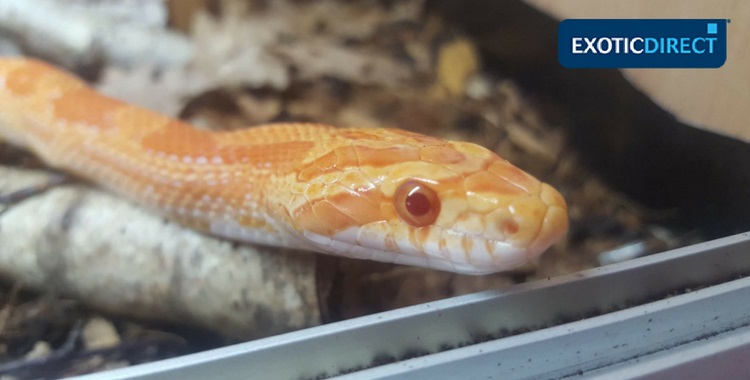 Snakes usually have to shed their skin entirely. One branch should be kept on the heated side of the cage, and the other on the cool side. Corn snakes need a humidity level of 40-70% to thrive. Corn snakes are a resilient and healthy species with no known health problems.
Snakes usually have to shed their skin entirely. One branch should be kept on the heated side of the cage, and the other on the cool side. Corn snakes need a humidity level of 40-70% to thrive. Corn snakes are a resilient and healthy species with no known health problems.
It is possible that your snake will become ill on its own. Most health problems are directly related to snake care and keeping. The most common disease of corn snakes is stomatitis. Take the vomit or feces to your veterinarian for analysis if your snake is lethargic or unwell. Be sure to clean the aquarium regularly, removing faeces and urine as soon as possible to prevent germs and fungus from building up in the aquarium. As snakes mature, they shed their old skin.
Does your snake need to see a veterinarian? A qualified reptile veterinarian must examine your snake within forty-eight hours of purchase. During a visit to the veterinarian, the animal's weight is usually determined, as well as any deformities such as bumps, bumps, or signs of any external parasites on their body. Always discuss snake care with a veterinarian who is familiar with reptiles. Lack of activity is a normal response to stress, but if it persists, it may be a warning of a more serious condition that requires immediate veterinary attention. Corn snakes with clear, bright eyes and a frequently clicking tongue are healthy.
Always discuss snake care with a veterinarian who is familiar with reptiles. Lack of activity is a normal response to stress, but if it persists, it may be a warning of a more serious condition that requires immediate veterinary attention. Corn snakes with clear, bright eyes and a frequently clicking tongue are healthy.
Corn Snake Feeding Tips
Many people lack the knowledge to feed a corn snake, so people who have a corn snake often ask, "How do I feed my corn snake?" Feed your corn snake according to age and weight.
They don't need to eat a variety of foods to get a variety of nutrients or maintain their appetite. All you need to know is how often you should feed your corn snake, how much food it needs, and which corn snake food alternatives to avoid. Mice should be their main food source. Frozen rats of the appropriate size, thawed or reheated to above room temperature are also a good option. Young corn snakes should be fed once a week, and adults once every one to two weeks. A healthy diet is essential to maintaining good health, which can be achieved by eating the right foods.
A healthy diet is essential to maintaining good health, which can be achieved by eating the right foods.
To reduce the risk of being bitten when feeding a snake, use tongs or tweezers when handling snake food. You can feed your snake either in its enclosure or in a separate area such as a feeder. The advantage of using a feeder is that it teaches the snake to anticipate food as you move it around. Your snake, on the other hand, will learn not to expect food when you put your hand in its enclosure, making it less likely to bite you. Snakes may attempt to attack when stressed or when food is detected. However, they are not poisonous.
Minimize handling time for your snake. If you handle your snake too often, it may become restless and lose interest in feeding. You can also feed your snake after it gets dark. If your snake is not interested in the prey you are offering it, try feeding it other species from its diet. To find out if your snake will bite, try feeding it frogs, lizards, birds, gerbils, or hamsters.










